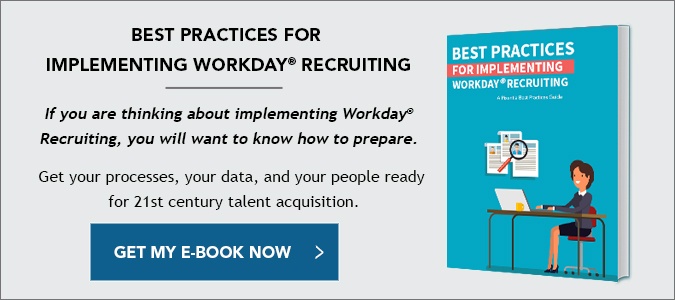
The pressure is on in recruiting. Finding skilled talent is now the top priority for 83% of companies,[1] and recruiting is where business leaders look first to fill the gap.
Many factors drive the skills gap, including advancing technology, demographics, and economics. Information from the Bureau of Labor Statistics tells a part of the story.

Although we have seen growth in available jobs, companies have not been hiring to fill positions because the right talent is not available. Our graph also shows that a rise in the number of quits, indicating that employees are more willing to leave employers if they are not satisfied.
Recruiters are on the front line of the competition for talent. Successful talent acquisition professionals have moved beyond “post and pray” to advanced sourcing, networking, and relationship management to engage the talent they need.
Welcome to the new world of technology-enabled recruiting. If you are facing recruiting challenges, it may be time to update or replace your recruiting technology.
Beyond Talent Management
Human resources software is reinventing itself, and we are in the midst of a new wave of innovation.[2] Software is moving beyond tools for HR process management to employee-centered technology. The management functions still exist, but the role of HR has changed from talent management to talent enablement. Just as Marketing developed a relentless focus on the customer experience, companies and the software they use focus on the personal experience of each member of the organization.
As Josh Bersin explains, HR software has moved beyond automation and past talent management, and is now moving through employee engagement to an age of employee empowerment. New startups are building on new ideas to create integrated interaction between machines and people. Mobile applications are becoming an integral part of almost every employee’s work day.
What does this mean for recruiting?
Every part of the candidate experience is undergoing a change. New demand for recruiting tools have created a new array of applications. This doesn’t mean the functions in your ATS aren’t valuable. They are the foundation of compliance in hiring practices, but innovators are leading the way ahead with new technology:
- Sourcing management software helps recruiters evaluate the effectiveness and cost of candidate sources to maximize the efficiency of recruiting spend. Software solutions offer direct connections to hundreds of sources. These tools answer the biggest question of all: where are the top candidates?
- Social recruiting tools to help recruiters build the company brand, create a following, and interact with both active and passive candidates. Sixty percent of companies are already using social media in their hiring.[3]
- Internal and external candidate sourcing. Internal job posting have been around for a long time, but organizations are now making better use of employee profiles, development history, and performance data to locate the talent within their companies.
- Referral management. Recruiters reported in the LinkedIn survey that employee referral is their best source of quality hires. Today’s tools help you manage the programs and pay referral bonuses.
- Talent relationship management (TRM). Built on the practices of customer relationship management (CRM), these applications enable recruiters to build talent pools and engage people who were strong candidates but were not selected for a role. Candidates no longer need to start from zero for the next opportunity, and recruiters can reach out to them when they have a match.
- Collaborative interviewing. Modern recruiting platforms provide communication tools for interviewers to work together as they move toward a decision.
- Video interviewing and analysis. Live remote interviews are becoming more widely used, and vendors are moving beyond just connecting the people to providing scientific analysis of the interviews.
- Mobile career portals. Many recruiting platforms now provide the means for candidates to apply using their phones. Vendors realize no one wants to type an application on a phone, so portals can grab an applicant’s professional social media profile. We can expect that applicants will soon expect all application processes to be as simple as that.
- Robust analytics. Modern recruiting requires the ability to make predictions, and an analytics solution is necessary to make sense of the vast torrent of data created in the recruiting and onboarding processes.
Does this mean you need to junk your ATS and find a new solution?
We approach this question carefully. Your recruiting needs are based on your business goals. You may need all this functionality or none of it. For example, you may need to do some social recruiting, but it may be enough to join in Marketing branding efforts. If you are recruiting primarily construction workers, you probably don’t need much video interviewing.
Conduct a thorough analysis of your recruiting strategy and future needs before you consider the leap into sophisticated software. Recognize, too, that each additional technology tool can complicate the job for a recruiter if you have a small staff. Productivity software should make your people more productive.
Talent Suite or Best of Breed?
Single-focus vendors can innovate faster than vendors of talent suites. If you need leading-edge capability, you may wish to consider a top specialist like Jobvite or iCIMS. If you have a talent suite and can use the recruiting module in it, you can easily integrate other vendors to provide ancillary services, and the best vendors will provide API connectors.
Your digital strategy will determine the path you take, but if your recruiters are to be competitive, they will need the right tools.
References:
1. “Global Recruiting Trends 2017.” LinkedIn Talent Solutions. October 27, 2016.
2. Bersin, Josh. “The HR Software Market Reinvents Itself.” Forbes. July 18, 2016.
3. “Number of Employers Using Social Media to Screen Candidates Has Increased 500 Percent over the Last Decade.” CareerBuilder. October 28, 2016.
 PhenomᵉCloud is a comprehensive technology solutions provider committed to empowering businesses to overcome challenges, enhance their workforce capabilities, and achieve superior outcomes.
PhenomᵉCloud is a comprehensive technology solutions provider committed to empowering businesses to overcome challenges, enhance their workforce capabilities, and achieve superior outcomes.

Leave a Comment